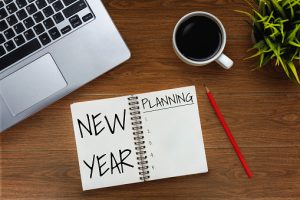 A fresh start is one of the gifts of a new year. And this year we have the bonus of beginning a new decade to motivate our efforts to make a change or launch a new project.
A fresh start is one of the gifts of a new year. And this year we have the bonus of beginning a new decade to motivate our efforts to make a change or launch a new project.
If looking for new work is part of your 2020 plans, read on for some ideas to help you revise your current resume skillfully, and make the kind of impact on the reader that you really hope for.
1 Polish visual elements
I’ve reviewed hundreds of resumes and readability is easily the biggest issue I run into in early drafts. Use plenty of white space, and sharp, consistent formatting for each job you describe. Use a limited number of fonts, preferably just one or two. Avoid using too many attention-getting methods such as all caps, bold, and increased font sizes, or the reader struggles to know where to look. Make it neat and scannable by using clear headings. It can be helpful to look at a number of resume examples to get a sense of what makes a resume easy to read. Check out resume examples.
2 Refine language elements
Spelling, grammar, punctuation. As essential as these three are for general written communication, they are even more so for your resume. I recently texted a friend about picnicking at a park where “we spent time eating watching children jump off the slide”; he replied that I seemed nonchalant about eating children. Funny in that context, but an error like leaving out commas is ridiculous, avoidable, and potentially the endpoint of consideration for a job application. Spellcheck is very helpful, but misses errors of context. Your best bet is careful writing, followed by at least two read-throughs by friends, family, or professionals who have impeccable editing skills.
3 Revise repeatedly, even if it feels like you can’t stand it
The resume is probably your strongest opportunity to introduce yourself to an employer, and every organization and even different jobs within one organization may require you to make subtle tweaks to your resume to make the best introduction. Recently I observed a new college grad tailoring her resume to send to a networking contact she’d been given. She requested input from her mother, an excellent writer, as well as myself. The pain and agony of multiple revisions ensued, aiming for nuanced language and expression geared to appeal to this contact. However, her mother made a great point. It’s worth even torturous review and revision to make your resume clear and relevant to each position.
4 Please, be interesting
Is it job seekers’ fault that they feel so anxious about making a good impression that they remove all trace of personality from their resume? No, job search is stressful for most. However, it’s still your responsibility and opportunity to write in enough detail to interest a reader in who you are and what you’ve done. “Delivered packages for UPS” may be accurate, but if you need to sell that experience to an employer, you could amplify it, such as “Drove delivery truck through difficult weather conditions. Maintained target speed for package deliveries, while retaining near-perfect accuracy. Recognized for outstanding, friendly customer service.” Voila! You’ve given the reader a vivid picture that includes how you put your whole self into the work, a great quality in any position. Take the time to filter details to ensure you maintain your own unique voice.
5 Add results to build context
Resume experts pound away at this advice, but I think it’s often skipped because it challenges the imagination to actually do it. Some jobs appear lacking in results, or you may not have tracked your statistics on the job to—down the road—accurately report them on your resume. But numbers and impact are so helpful to an employer who wants to get a picture of what you’ve done. I recently helped a Conservation Corps worker describe his experience, “Coordinated group of 25 volunteers. As leader of 25-person team, removed invasive species growth over 50 acre wilderness, restored and maintained over 10 miles of trails. Developed new team protocols that led to improved communication and more efficient trail practices.”
The fact is that your actions and activities on the job lead to something. If you’ve kept files on your accomplishments and results, that’s terrific. If not, helpful sources to identify that “something” and put results on your resume include: use your original job posting or position description to identify core activities of the job and note their impact, gather details from your performance review documentation, brainstorm a list of key projects you worked on, talk through your job with someone who has strong analytical skills, consider what impact it would have had on the organization if no one did your job.
If you revisit your resume with these ideas in mind, it will be more readable, clear, expressive, interesting, and impressive. Good wishes in your 2020 resume revamp from CareerOneStop.
Check out the Resume Guide for more resume recommendations.
